#Color theory
Explore tagged Tumblr posts
Text
🎨 ~ Color Theory & Design Tutorial ~ 🖌️
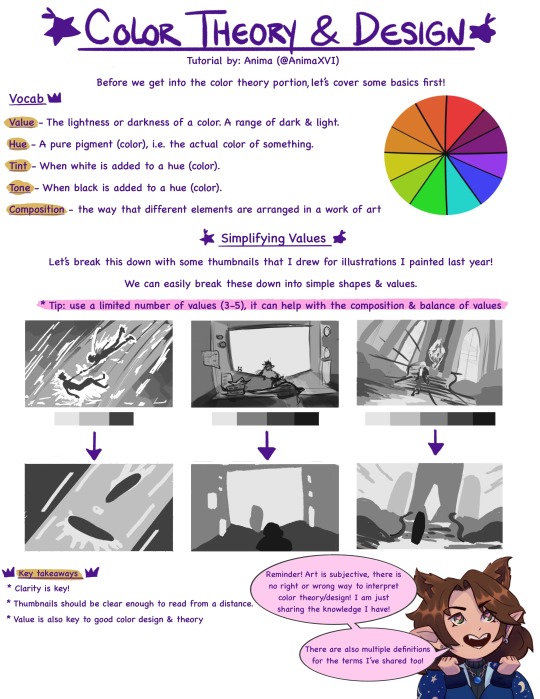
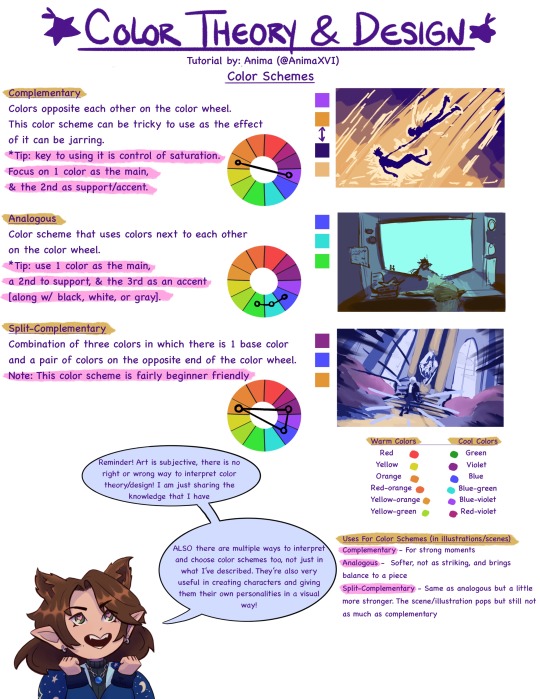
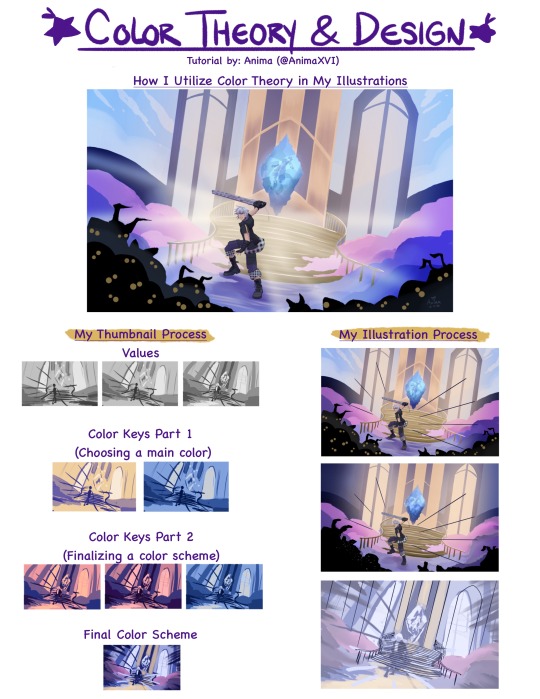
I've been thinking about making tutorials for a while now. So I thought I'd share about a subject I'm really passionate about! I did my best to make this beginner friendly & also as a review sheet 💜
(Please note this is from my own knowledge/experience! There are waaaay more resources, like books & videos, out there that are super helpful and go further in depth of this topic!)
#art tutorial#color theory tutorial#color theory#artists on tumblr#art advice#color scheme#color design
1K notes
·
View notes
Note
any advice for picking fun and vibrant colour palettes that still feel true/recognizable to an object/setting/character's base colours? something about intense lighting?
I've been asked about how I choose my colors by a lot of people and I finally sat down and made a whole ass youtube video about it!
youtube
8K notes
·
View notes
Text
Free resource for artists and designers!!
I made a website where artists and designers can get color palette inspo from fire hydrants I've 3D scanned all over the US
Some of my favorites:
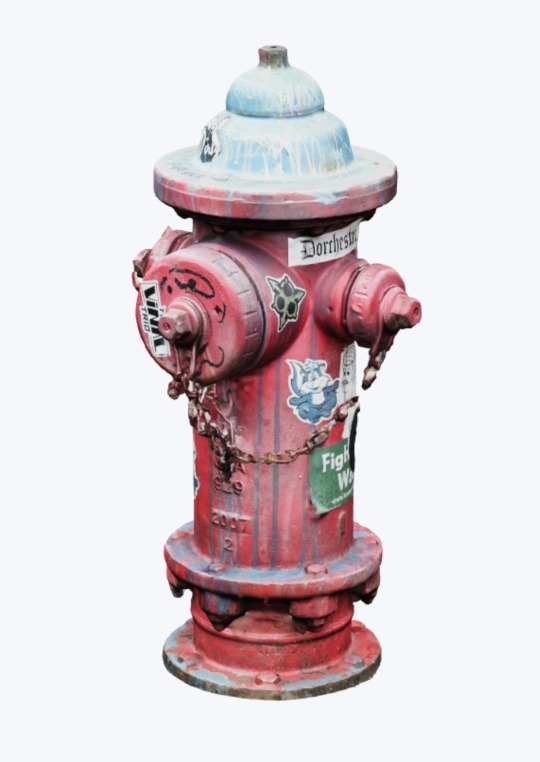
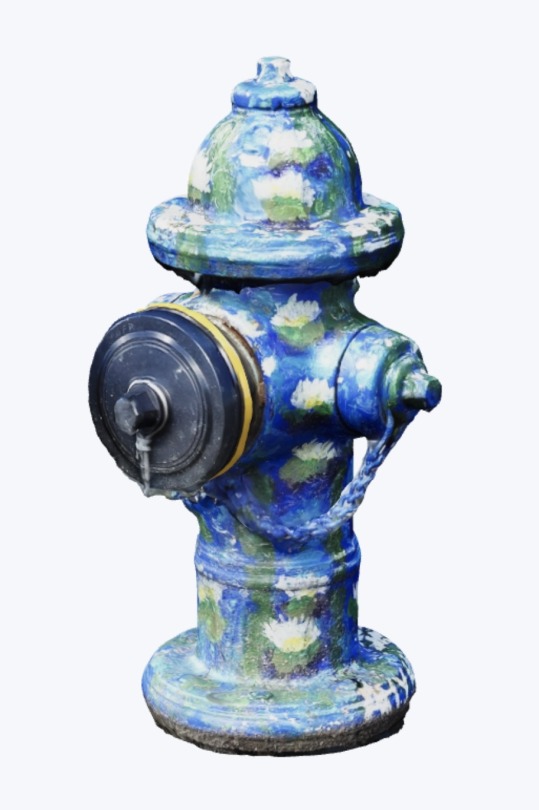
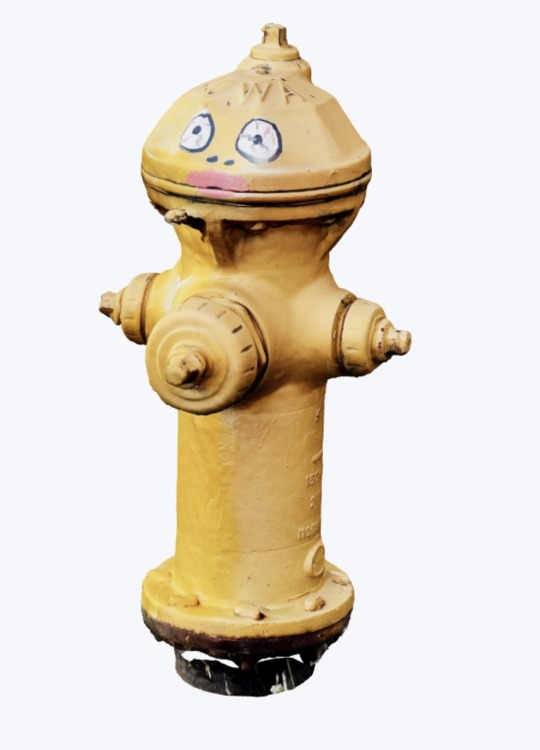
There are about 100 hydrants so far and I'm continuing to add more all the time
Public infrastructure is sexy, baby!!!!!! Pass it on!!
dayroselane.com/hydrants
39K notes
·
View notes
Text
I choose to believe this is the bathroom in the children’s hospital.

#color theory#children’s hospital#childrens hospital#a new way to decorate wrong#interior design choices
23K notes
·
View notes
Text







Hey there ! In one week the sign ups for my online course at the Underpaint Academy will open ! If you wanna learn more about composition and colors, join me ! https://underpaintacademy.com/
2K notes
·
View notes
Text

#oh no#i know a lot of audio engineers#it's like a hallucination#dare i say it#because color theory#children's hospital#hotel carpet patterns#color theory#heavy sigh
91K notes
·
View notes
Text
🎨color study note
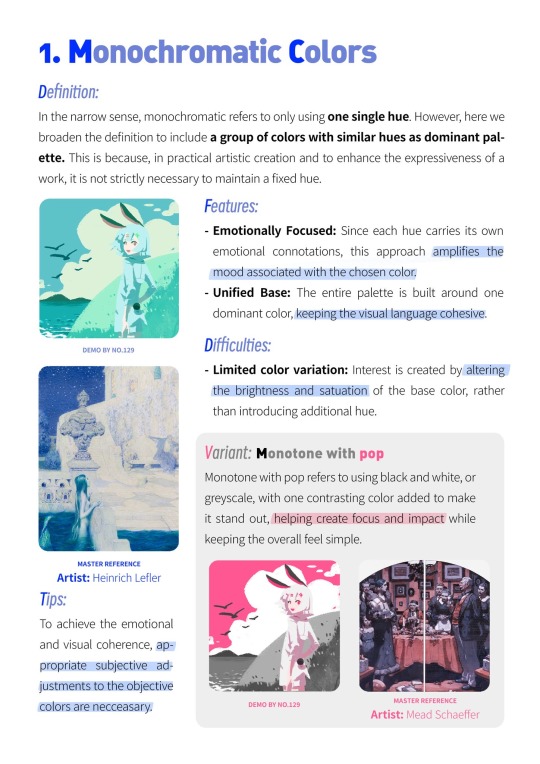
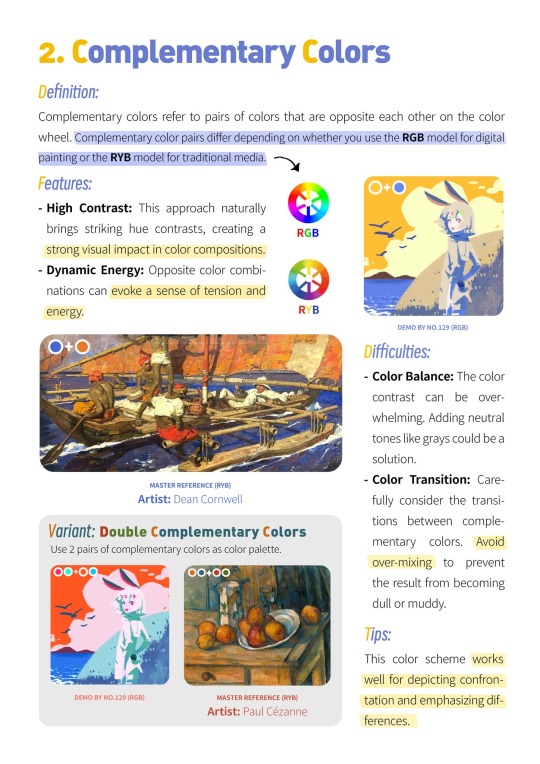
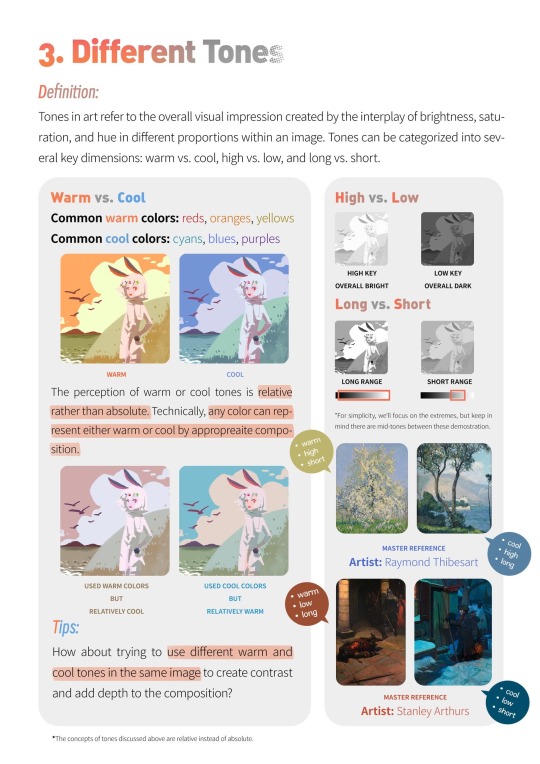
19K notes
·
View notes
Text

At More Than 800 Pages, ‘The Book of Colour Concepts’ Revels in Four Centuries of Chromatic Wonders
2K notes
·
View notes
Text


So I’m spreading this around because it’s become my new favorite way to color.
I got this while watching a tutorial on background art, and the artist would start with a base color, then use the lasso tool and the hue/brightness/saturation sliders to come up with the other colors. From what they’ve said, it’s a common practice, so I wouldn’t be surprised if some of yall do this already. But if you don’t, and it’s new to yall, I RECOMMEND IT.

How it started 👆

Lasso tooling different sections and adjusting the hues with the color sliders

What I get


#artist tip#color theory#Jesus does it take the mental work out of lighting a scene too#at least for me
623 notes
·
View notes
Text

Some rough colour studies of some screencaps of the Hunger Games movies off of Pinterest.
#art#fanart#illustration#painting#digital art#sketch#digital painting#digital drawing#digital sketch#drawing#color study#color theory#colour study#colour theory#thg#the hunger games#the hunger games catching fire#the hunger games mockingjay#katniss everdeen#katniss and peeta#thg katniss#the hunger games katniss#peeta mellark#thg peeta#the hunger games peeta#prim#primrose everdeen#gale hawthorne#artist on tumblr#helloitsshenart
26 notes
·
View notes
Text
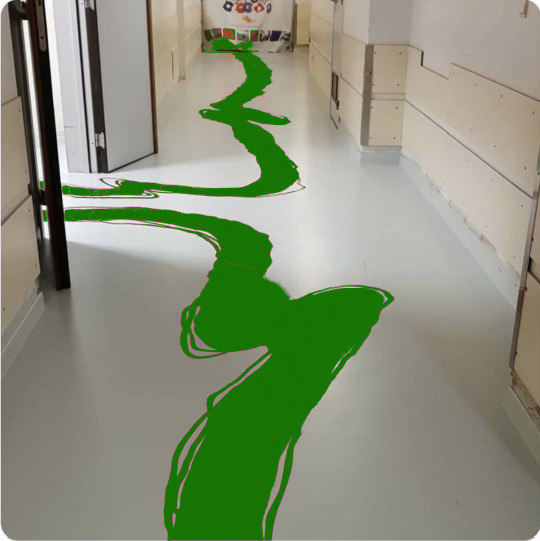
The Vulcan children's hospital recently redecorated. I'm not convinced they chose the most logical option
17K notes
·
View notes
Text
for all the artists out there, here are my favorite resources i use to learn!
Files
The Complete Famous Artist Course
Art Books and Resources
Art, Anatomy, and Color Books
PDF Files of Art Books
Morpho and Other Art Books
Mega Folder
Internet Archive
YouTube
My YouTube Playlist of Tutorials
How to Draw Facial Features
Drawing and Art Advice
Drawing Lessons
Art Fundamentals
Anatomy of the Human Body
2D Animation
Perspective Drawing
Websites
Pinterest Board for Poses
Another Pinterest Board for Poses
Pinterest Boards for References
Reference Angle
AdorkaStock
Figurosity
Line of Action
Human Anatomy
Posemaniacs
Animal Photo References
Humanae - Angélica Dass
Fine Art - Jimmy Nelson
Fashion History References
Fashion Museum
The Met Collection
Character Design References
CDR's Twitter Account
iamagco's Twitter Account
taco1704's Twitter Account
takuya_kakikata's Twitter Account
EtheringtonBro's Twitter Account
Drawabox
Color Wheel
Color Palette Cinema
Free Images and Pictures
Free Stock Photos
FILMGRAB
Screen Musings
William Nguyen Light Reference Tool
SketchFab - 3D Skeleton Model
Animation References - sakugabooru
Animation Screen Caps
Animation References - Bodies in Motion
#art#art resources#art books#anatomy#composition#painting#art tips#art help#art tutorial#perspective#color theory#art reference
41K notes
·
View notes
Text


CMYK Rainbow Dice
A dice set made with only the colours cyan, magenta and yellow which combine as you look through the dice to form a full rainbow spectrum.
Plus they cast super colourful shadows!
#dice#handmade dice#handmadedice#dnd#ttrpg#resin dice#transmutationdice#dungeons and dragons#resin#d20#rainbow#cmy dice#cmyk#cmy#color theory
7K notes
·
View notes
Text
PIC CINEMA !! <3

Byler is Narrative Destiny:
Decoding Mike and Will’s (rather obvious) love story
Alternative title: Subtext My Ass
Just an unapologetically nerdy breakdown of Mike and Will through colour psychology, symbolism, and Jungian Archetypes to eviscerate any remaining Byler doubt that may be out there. Mike and Will have been (quite literally) written for each other. Let me prove it.

The psychological significance of red, yellow and blue:
Let's start with the basics.
Mike's representative colour is blue, and Will's colour is yellow.
Blue is the colour of Mike's bedroom and most of the clothing he wears features various shades of blue, as well as green and teal (which are secondary and tertiary colours from blue).

And, although I wouldn't die on this hill, I do think Mike's palette could function as subtle queer-coding as it resembles the gay flag.

Yellow is the colour of Will's bedrooms in both Hawkins and Lenora. He often wears yellow and pairs it with red.
(Interestingly, the only season where Will does not wear these colours as often is season 2, when he is possessed by the Mind Flayer).

And of course, potential queer-coding with red and yellow both being 2 of 3 primary colours featured on the generic rainbow pride flag. Will's wardrobe in general is very colourful.

Unlike Mike's palette which features secondary and tertiary colours, Will's red and yellow are both primary colours. They are very distinct and especially striking when paired together.
Therefore, red should be given equal focus to yellow when we analyze Will's character design and the associated psychology of his character.
I argue that red is Will's other representative colour, because he is psychologically split.
Will having two distinct representative colours makes a lot of sense when we remember that he is constantly associated with split imagery.
This split imagery is usually portrayed using rods or other phallic-shaped objects.
The show is telling us visually that there are two sides to Will Byers, and because the imagery is phallic, it likely has something to do with his sexuality.

When I see rods, I'm reminded of the Suit of Wands in Tarot.
Tarot uses symbolism, semiotics and numerology to communicate meaning. The wands in tarot are rod-like and traditionally depicted as sticks or branches. They are phallic symbols; representing passion, lust, and vitality, as well as the element of fire.

These are all things we subconsiously associate with the colour red, too!
So, let's take a closer look at colour psychology, starting with red!
Red exudes passion: love, energy, excitement.
It makes sense.
Red is the colour Will used for Mike's heart emblem painted on his shield. (Accompanied by a yellow crown).
Red represents Will's passionate love for Mike.

Not innocent or platonic love, but a mature, sexual and romantic love. The kind a closeted gay teen in the 80s might be terrified of.
What's more interesting is that even though red and yellow are Will’s colors, he projects them onto Mike in this paiting. Likewise, blue is Mike's colour, but Will assigns it to himself through the spell he's casting. Figuratively, casting a spell refers to strongly attracting, enchanting or captivating someone.
The meaning here is twofold:
Mike is attracted to Will, and feels that he is a forbidden temptation or even a seducer (more on that later).
Will knows (or rather, feels) that the attraction is mutual on a subconscious level, even though he may logically believe this not to be true.
The imagery in Will's painting reminds me of the official artwork in which Will is casting a blue lightening bolt spell, which connects to Mike's shield featuring the red heart.
Red and blue are also the only colours depicted in this image. They are clearly significant when paired together. (Perhaps more significant than yellow and blue...)

Red also represents Will's latent manhood (and subverted masculinity).
We associate red with fire, and by extention, with gun-powder.
Will the Wise is a wizard, and wizards cast fireballs—but he hesitates to cast it. Will also literally wields a gun—but he never pulls the trigger.
(At least, he doesn't fire it in the canon of the show. Like the fireball however, Will may have eventually pulled the trigger, as depicted in the comics). When Will does shoot the gun in the comics, he does so while closing his eyes and looking away, meaning that it is unlike him or "feels wrong."

In a symbolic sense, the fireballs and gun (which is phallic) represent masculinity, aggression, and agency.
Will is hesitant to embrace them all.
And the thing is, Will's gentle and slightly more effeminate nature (at least by 80s standards) is a perfectly valid expression. There is a distinction between masculinty and manhood: Manhood is simply the sexual and psychological maturity of an adult man, as compared to that of a child (boyhood). Like how red represents Will's mature love for Mike, it could also be foreshadowing of his coming-of-age. There's no need for him to "toughen up" or act "manly" in order for him to step into his manhood. Rather, he will likely do so by reclaiming his agency.
Will is going to symbolically embrace his manhood by:
Accepting his sexuality and coming out (at least to people he trusts, because it's not everyone's business).
His emancipation from the influences of the Mind Flayer, Vecna and Lonnie (malevolent forces which represent shame, trauma and domination).
Now, let's move on to Will's (apparently) more dominant representative colour.
Yellow exudes innocence: creativity, happiness, optimism.
Will is often percieved as innocent and more child-like than the other party members, despite his advanced emotional maturity.
He wears a lot of yellow (and plaid) to represent this innocence and youthfulness.
Yellow represents Will's innocence.
According to the casting director, Will was casted to appear young and innocent, and also for his large, expressive eyes. Wide eyes (or doe eyes) are associated with innocence, children and prey animals. Will also visually resembles prey animals such as rabbits and deer.
Before he is abducted, Will appears as a metaphorical deer caught in headlights.
(The light is on him when it should be on the demogorgon. He is the prey here).

Yellow also represents Will's artistic sensibilities.
Even though some of the images depict violence, Will's drawings still exude childhood innocence and wonder: they are colouful, whimsical and fantastical.
They also represent optimism and friendship, which is very yellow-like. His drawings appear to be inspired by the antics of the party's campaigns, depicting triumph rather than tragedy.
(Mind Flayer and Zombie Boy drawings aside).

Yellow is associated with Will's halo imagery (and other religious symbolism).
When we see Will from Mike’s perspective, he is bathed in yellow light.
It’s halo imagery—and it provides a stark contrast to the split phallic imagery we get from Will's own perspecitve.
(It's worth asking, since this is Will from Mike's perspective, does it really say much about Will's psyche? Or does it point more towards Mike's own psyche?)

Light signifies optimism, hope and clarity.
A halo specifically sybmolises holiness, purity and martyrdom.
This relates strongly to Will's role as cleric (a class who use divine magic gifted by deities, which is often depicted as golden or yellow). The thing is, Will the Wise is actually a wizard. It was Mike who determined Will was a cleric in season 2. Mike seemingly placed Will into this role, because it fits how he views him.
Additionally, Will's role as spy for Vecna and his "True Sight" can be associated to yellow.
When we see a single eye, it usually signifies the all-seeing eye, also called the Eye of Providence.
The Eye of Providence is typically depicted emanating golden yellow rays of light. It's more religious symbolism connected to Will.

But this is not a positive thing for Will—it's connected to his abduction, possession and subjugation.
Mike's halo-ifying of Will tells us that he views Will as something angelic: pure, divine and holy. But Will does not percieve himself this way at all. Will is less concerned with the religious symbolism and more concerned with the phallic. To put it bluntly, Will is not as innocent as he appears, and is thinking more about his sexuality and desire than people realize.
Finally, yellow is associated with Will's metaphorical death.
Will's funeral is littered with yellow roses, and through the liturgical prayer (more religious coding) he is again directly tied to innocence.

We now have an association between yellow, innocence, and death.
Let me decode this very simply:
Child = innocence Death = loss A child's death = the symbolic loss of innocence. So even though Will lives, he lost his childhood innocence when he metaphorically died.
I hope that I've been able to get the point across that although yellow fits many aspects of Will's personality, it also seems tied to his repression and stasis.
Psychologically and narratively, yellow does not indicate growth for Will's character, in the way that red does.
Now, let's move onto one of the most tragically misunderstood characters in the series and his representative colour.
Blue exudes sincerity: loyalty, stability and trust.
This is the absolute epitome of Mike.
Mike is incredibly loyal, often even to his own detriment. Everytime Mike does a wrong, he always strives to make a right. In fact, he's prone to taking ownership of things that aren't his actual fault or responsibility. He's also deeply compassionate and determined to do everything he can to help others.

Blue represents Mike's leadership capabilities.
In marketing, brands will often choose the colour blue to subliminally communicate that they are dependable, trustworthy, and leaders of industry.
Mike is also a natural leader: he has played as both Dungeon Master and paladin, he initiated the efforts to find Will among his friends, and he took El under his wing. And this is just in season 1 alone.
He continues to protect and guide his friends through-out the series, using his sharp wit and intelligence (over brute strength) to problem-solve.
Mike's leadership is not based in ego, it's a genuine psychological need. It's where he fits into the world: helping, protecting and guiding others. It's natural for him.
Once again I look to the Tarot, and this time the Suit of Cups.
This suit represents the element of water, representing the inner world, emotions and spirituality. The cups themselves are symbols of fulfillment: is the cup empty or full?
I think we should ask the same question when we look at Mike. Is he empty or full? What is it that he actually wants? Are his needs being met?

The colour blue is associated to water, symbolising the unconscious, emotion and hidden depths.
Blue represents Mike's hidden depths (and his unmet fulfillment).
Mike is associated with water, too. In a very literal sense. He jumped into the quarry to save his friend, likely knowing it would kill him.
(And note that his jacket matches the blue-green colour of the quarry water).

Why did he do this? Was it truly just to save Dustin, or is there more here hidden beneath the surface? Much like Will's experience in the Upside Down, Mike's jumping into the quarry is never explicitly addressed. He never talks about it, and it's never explained.
This implies repression, both emotional and psychological. There is a hidden pain and depth to Mike, that is beneath the surface. He's like still water.
In both Jungian and Freudian psychology, water is associated with the unconscious. And in Stranger Things, water facilitates the transition from unconscious to conscious.
When El has to recover her repressed memories of Hawkins Laboratory, she does so while floating in water. In fact, she uses water to infiltrate other people's consciousness, too: entering their private memories. When Heather begs El for help (though she was already possessed by the Mind Flayer) she is also submerged in water. This was a message from her subconscious, which was repressed by the Mind Flayer.

Mike never becomes submerged into the water, however. In the literal sense this is a relief. But metaphorically, it's a problem. Like Will's metaphorical death at the quarry, Mike is also in a state of stasis.
Mike needs to transition his unconscious to the conscious in order to be emotionally and psychologically fulfilled.
There is no wonder why people often find Mike's character to be confusing or amorphous: he has been intentionally written to be this way.
We as the audience are supposed to experience his struggle with identity, purpose and fulfillment along with him. We're meant to feel his confusion. The story of Stranger Things is (largely) told from Mike's perspective—he's a writer and storyteller after all—and he's hiding the things about himself he does not yet want us to know, because he still needs to deal with them himself.
Okay, I hope you're still with me, because we're getting to the crux of it now.
The Jungian Archetypes:
Now that we've explored how Mike and Will's representative colours (and associated symbolism) reflect their inner worlds and personalities, we have enough information to identify their most prominent Jungian Archetypes (including their shadows).
Jungian Archetypes are often referred to as Character Archetypes or Literary Archetypes. Sometimes, this is why an ending feels “right” or inevitable. When we understand the characters, we already know on a gut level what kind of ending they will get. In way, it's a form of predictive modelling for storytelling.
Will as the Lover archetype:
If red represents Will's passion, love, and lust, then that makes him the Lover.
The Lover archetype is passionate, romantic, and driven by a desire for deep connection. Alongside the Everyman, the Lover belongs to a trio of archetypes that seek belonging above all else. Specifically, the Lover seeks both emotional and physical intimacy.
They are empathetic and sensual, and I think this relates to Will's deep appreciation for music and art. He's also very in-tune with his own (and other's) emotions, especially Mike's.

(This is the deep, sensuous gaze of the Lover. There's nothing "innocent" about it. He is drinking Mike in, and he's not shy about it).
Again, I reiterate that Will is not as innocent as he appears. When we are placed in his perspective, it's love and intimacy that he most craves. It's phallic imagery that we see. He's no longer a doe-eyed child; he's a young man with emotional needs.
It's worth noting that based off his characterization (sensitive, romantic, selfless and handsome), Will would probably be portrayed as a romantic leading man if he were straight. The one who "gets the girl."
He's Colonel Brandon (Sense and Sensibility). He's Jack Dawson (Titanic).
The Lover's Shadow
The Lover's Shadow-self may be referred to as the Addict or the Seducer.
The Addict or Seducer is hedonistic: They prioritize external validation over genuine connection, and crave temporary gratification. Will is not portrayed as hedonistic, meaning he is sitting quite firmly in the light aspect of his archetype rather than the shadow.
It suits him. It's his endgame.
However, the Seducer certainly invokes the imagery of Will being a spell-caster: one who can enchant others, even against their will.
Perhaps this is Mike's subconscious perspective: Mike feels that Will is tempting him and seducing him into queerness. Was Will Mike's sexual/ gay awakening? It's very possible.
Alternatively, this could represent Will's own subconscious fear regarding his sexuality, considering the attitudes towards gay men at the time: Will fears that he will become a sexual deviant, that his love is impure, and will lead Mike down a path of sin.

Very compelling stuff. Let's take a look at Will's other Jungian Archetype.
Will as the Innocent archetype:
The Innocent is pure, optimistic and hopeful. What they seek most is harmony and safety, and they choose to see the goodness in others.
They represent the desire to return to childhood. It makes sense that a character who had his childhood stolen from him due to trauma, and who has sexual identity issues, would project as the Innocent archetype. However, I think the Light aspect of the Innocent archetype fits better with younger Will (seasons 1-2), than with teenaged Will.
This is why I think Will uses the Innocent as his Persona (projection).
The Innocent's Shadow
The Innocent's Shadow-self is the Victim.
They are naive, vulnerable and easily-manipulated. The Victim embodies the feelings of powerlessness and helplessness.

It's certainly reminiscent of Will's continual misfortune.
From his father's abuse, his abduction and possession, to his "unrequited" love for Mike, Will has been perpetually victimized through-out Stranger Things.
As far as the Innocent goes, Will is sitting more firmly in it's shadow than in it's light.
But Will is not naive, and he's too "wise" to be easily-manipulated. I think Will has partially out-grown his innocent image, or rather, the version of innocence he is attached to (sexless, childish and victimized). Will is going evolve into a more mature (and self-possessed) version of the Innocent: optimistic, wise, and hopeful. He'll achieve this by leaning more into his Lover archetype, which will facilitate his coming-of-age.
Mike as the Everyman archetype:
The Everyman is the protagonist. They are relatable and down-to-earth. They don’t display any outward powers or extraordinary gifts, but they are humble, compassionate, and kind.
Alongside the Lover, they seek belonging above all else. For the Everyman specifically, this belonging centres around community (friendship).
Mike is certainly the Everyman.
There is nothing more important to him than his friends.
His role as the Everyman also makes sense when we remember he's the primary narrator of the story. He's the ordinary boy who is thrust into extraordinary circumstances.
He's constantly in awe of those around him: El's superpowers, Will's light and "innocence." The Everyman often mistakenly believes they are unimportant. They are too normal, while the other characters around them appear so much more distinct and larger than life.

Because the Everyman is usually so caught up in trying to figure everybody else out, they tend to neglect their own sense of self.
But the Everyman is an extremely important character: they ground the story in reality, bring people together and find common ground.
The Everyman is the heart of the story.

The Everyman's Shadow
The Everyman's shadow is the Conformist or the Nobody.
Oh, yeah. We're going there Wheeler.
The Conformist possesses a fear of standing out or taking risks, and assumes socially acceptable identities because they're afraid to dissapoint or subvert expectations. In simple terms, they are repressed.
(Would anyone like a serving of compulsary heterosexuality? Mike's teeming with it).
Speaking of Mike's repressed perspective and subconscious state: Remember his simultaneous halo-ifying of Will and characterization of him as a seducer?
That's deeply psychological too.
This is what his halo-ifying of Will reveals about his pscyhe:
Mike's tendency to place others above himself
Mike's repressed sexuality: viewing Will as something both untouchable and unattainable.
He has decided to view Will as fully Innocent (to the most spiritual degree) as a means of rationalizing his sexual repression. You can't get with the guy who wears a literal halo! That would be… sacrilegious! The religious symbolism surrounding Will may actually stem from Mike's unreliable narration and conflicted feelings about queerness.
This is what Mike's view of Will as a spell-caster/ seducer reveals:
Mike feels that he’s been enchanted or bewitched by him.
He frames his desire as something external to himself. Something being done to him, because acknowledging that it originates within would mean facing his own queerness.
Mike is in his Conformist mode, and he's going to break out of it by the end of season 5.
That's not all though, there's also the Nobody.
The Nobody feels invisible and insignificant. They often lack ambition, and have feelings of inadequacy and low self-esteem.
This also sounds familiar.

And yeah, the fact that when Mike is in his shadow he chooses to confide in Will, and Will is the one who helps him step into his light should not be lost on us.
Will sees Mike's worth as the Everyman: the heart of the story.
He is the Everyman's Lover.
There's more to Mike, though. Like Will, he embodies a secondary archetype.
Mike as the Caregiver archetype:
The Caregiver is characterized by compassion, generosity, and a deep-seated desire to help others. Driven by a need to nurture and protect, they often prioritize the needs of others above their own.
They are motivated by structure and order; wanting to maintain the status quo, safety and familiarity.
Mike shows up as the Caregiver frequently. He is always protecting, comforting and safeguarding others, particularly those he sees as most vulnerable or in need of his service: Will and El.

While the Everyman pairs nicely with Mike's role as the narrator and protagonist, the Caregiver pairs with his role as leader. He's not a ruler; authorative, noble and intimidating. That's not his style of leadership. Instead, he's something softer. He leads by example: protecting, healing and serving.
The Caregiver's Shadow
The Caregiver's shadow may be called the Slave or the Enabler.
This emerges when when caregiving becomes self-sacrificing to an unhealthy degree, or when it's rooted in control, guilt, or dependency.
It's the incessant need to be needed, to any end.

Mike needlessly makes a promise to El that he will fix a problem he has no control over, and he breaks that promise because El fixed it herself.
Why does he do this?
Because he feels that it has to be his responsibility, even though he understands that El does not "need" him. This fills him with feelings of guilt and inadequacy, and validates his insecurities. It's very different to Mike's emotional support and compassion which he shows El in the earlier seasons. When Mike and El are dating, his Caregiver self is placed in the shadow: making him insecure, needy, and guilt-ridden.
Now, we approach the climax: Byler's compatibility.
Compatability:
Mike and Will are narratively (and psychologically) compatible, according to their individual character arcs and archetypes.
The Lover and the Everyman
The Lover enchants the Everyman: making them feel special, and convincing them to embrace their emotional and romantic needs, which inspires them to be active and bold instead of hesitant or repressed. The Everyman grounds the Lover: providing them clarity, stability, and a love which is based in sincerity and deep understanding, rather than physical or sexual validation.

Will enchants Mike by making him feel special and worthy of love, and Mike literally brings Will back to reality through his sincerity.
The Innocent and the Caregiver
Is this one not obvious?
The Innocent inspires the Caregiver: reminding them that there is good in the world worth protecting, making their servitude meaningful, rather than sacrificial. (Hello lotr reference! Mike and Will are extremely Samwise and Frodo coded). The Caregiver protects the Innocent: validating their optimism and sharing in their desire for safety, never making them feel stupid or burdensome.

Mike is inspired into action by Will's goodness, and Will confides in Mike as he trusts him to understand and validate him.
Finally, we've reached the conclusion!
The (predictive) endgames:
If characters have archetypical personalities and motivations, then they also have archetypical narratives. That is to say, we can predict the end of their story so long as we just pay attention.
Let me make something clear:
You don't depict someone as the Lover, and have them pine, without giving them their satisfying love story.
You don't depcit someone as the Innocent, and have them continually suffer, without giving them their peaceful ending.
You don't depict someone as the Everyman, who conforms and retreats into shadows, without having them surprise and subvert audience expectations.
You don't depict someone as the Caregiver, who sacrifices and gives, without having their efforts be appreciated and acknowledged.
Some stories do have sad endings, and our protagonists don't always get what they want, or end the story fulfilled. But allow me to remind you:
Stranger Things is a hopeful story about unlikely heroes (outcasts, rejects and non-conformists) beating the odds.
The characters don't just fight literal monsters, they fight metaphorical monsters that represent bullies, abusers and bigots.
The ending of the show may be bittersweet, but Will and Mike are sympathetic characters with good hearts, who deserve their happy endings.
My prediction is simple:
Will the Lover is destined for romantic union with his beloved, Mike. Mike the Everyman is on a path to embracing his true, authentic self. Will the Innocent will finally find safety, and freedom from represison and abuse. Mike the Caregiver will lead and protect with his greatest asset: his heart.
Mike is not just the narrator of this story, he's the heart of it.
And Will just so happens to be his heart.
It all comes down to them, and the show already foreshadowed it:

[fin].
#stranger things#byler#mike wheeler#byler endgame#will byers#stranger things 5#st5#byler evidence#byler nation#mike x will#will x mike#byler analysis#byler is canon#color theory#writing#writing archetype#archetypes
720 notes
·
View notes
Text

🔺 Feeling Stripes 🔺 source files
#pyramid#loop#seamless#visuals#trapcode#trapcodetao#mir#motion#geometry#stripes#color#color theory#artists on tumblr#vj#trippy#egypt#waves#flow#after effects#source files#patreon
2K notes
·
View notes
Text
⭐ Pixel Art Fundamentals - Hue Shifting
This technique is not uniquely specific to pixel art, but it's a very common term to hear when starting out watching those "dos and don'ts" videos. So what is hue shifting?
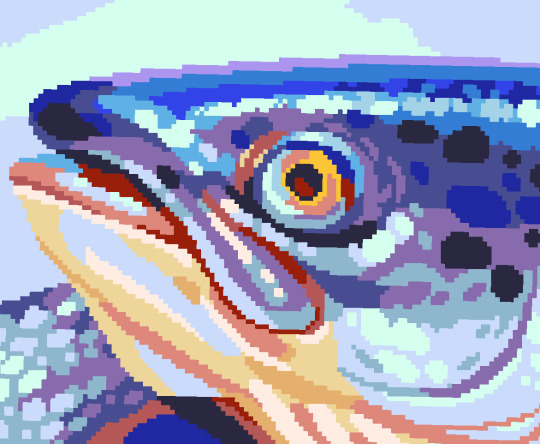
Hue shifting basically means to change the hue when making your shade darker or lighter. In this context, 'hue' = colour!

You may hear 'you need to hue shift more' when getting feedback on your art, but what does that mean really? Here are some examples:
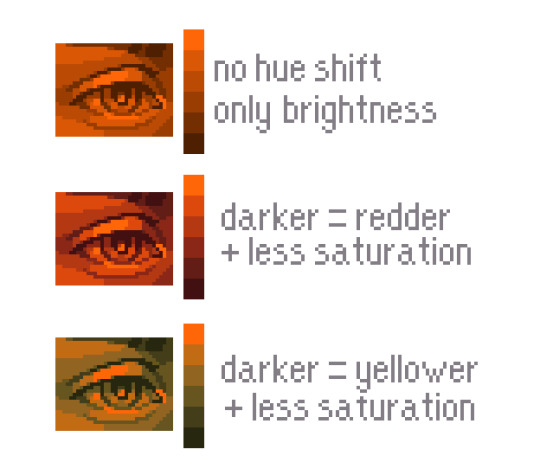
We can see even with just a bit of hue shifting, we have quite a different vibe for each drawing. In warm / daylight settings, no hue shifting can sometimes look a bit muddy or grey.
If we swap the image to grayscale, you can see that they look much the same:
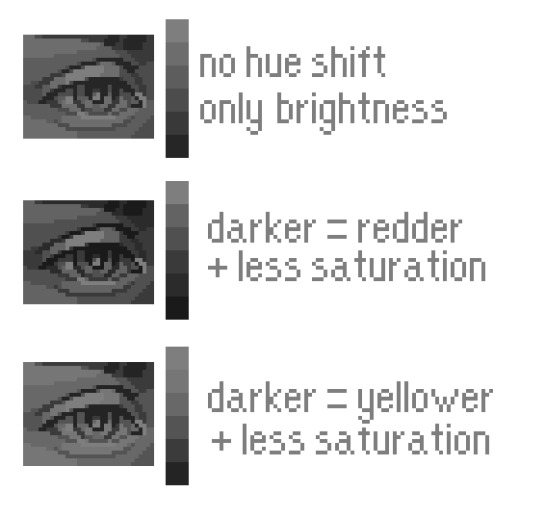
As long as the hue shifted colours have a brightness that makes sense, they usually will work. You can get quite wacky with it.

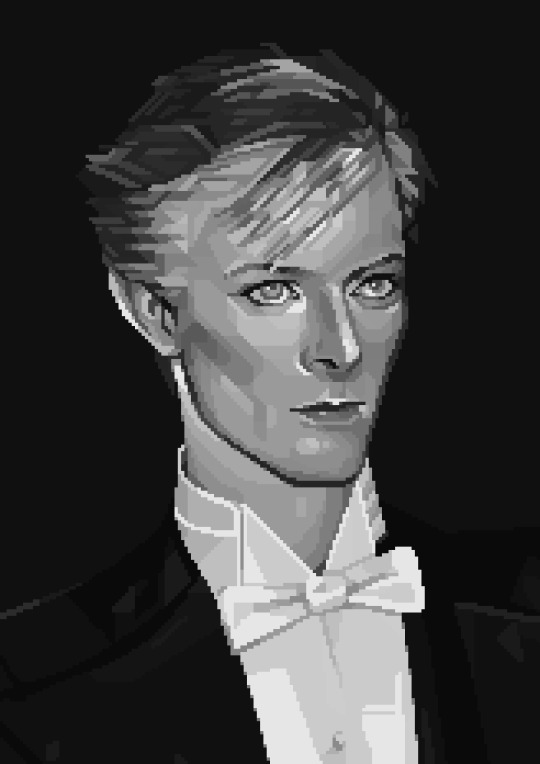
But is hue shifting always good? Not necessarily.
Below is some of my art where I intentionally didn't hue-shift at all. You can see it gives them an uncanny, digital, or photographic kind of look. As always, techniques are about your intention, or personal style.
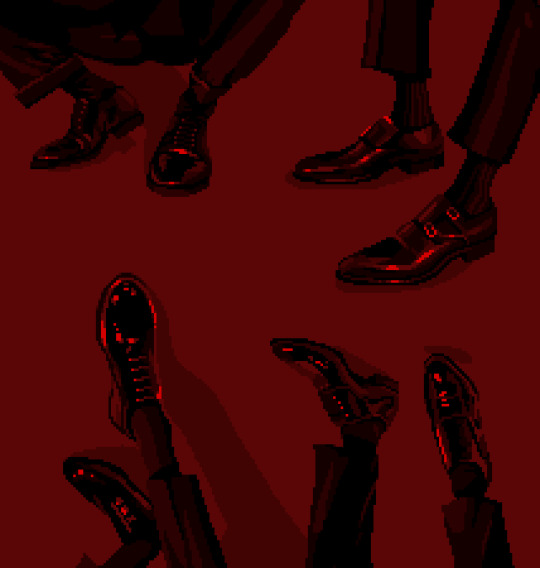
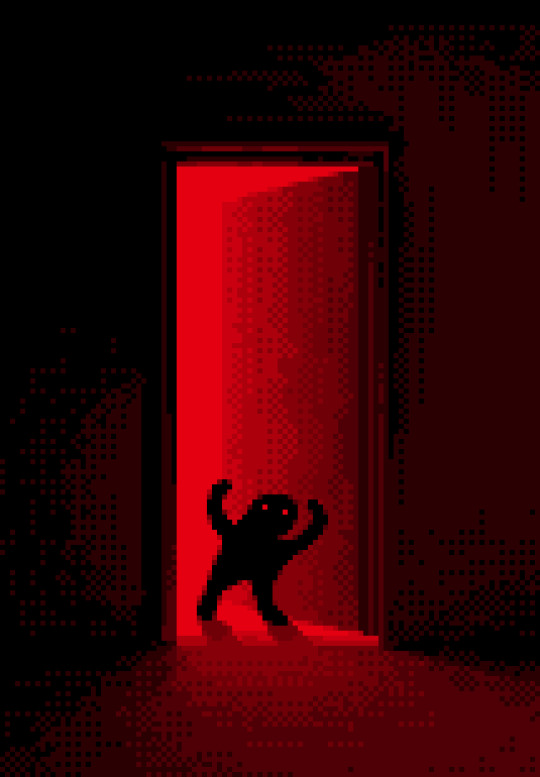
I recommend trying different hue shifting methods! I especially love to use a cool blue or teal for the lighter shades.
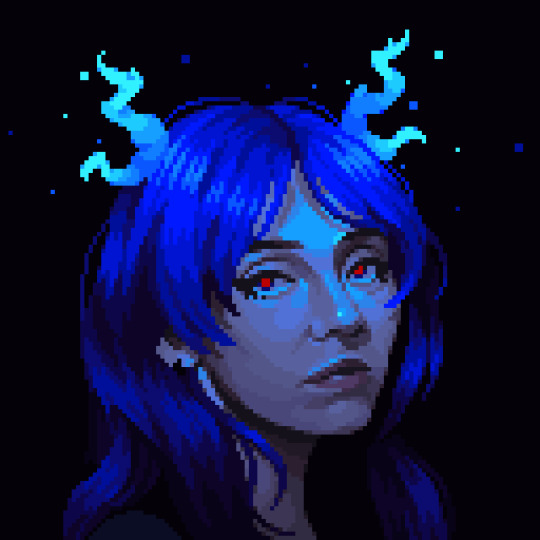
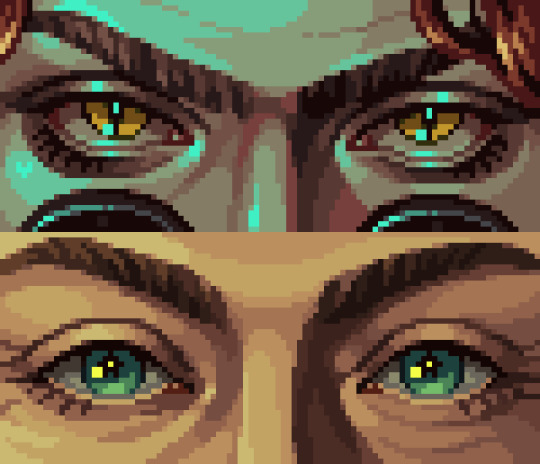
Thanks for reading and I hope this helped a little! Have fun with it!!
⭐ Read my full pixel art guide here!
#pixel#pixelart#pixel art#pixel art tutorial#tutorial#art tutorial#colour theory#color theory#hue shifting#art#illustration#pixel illustration
6K notes
·
View notes